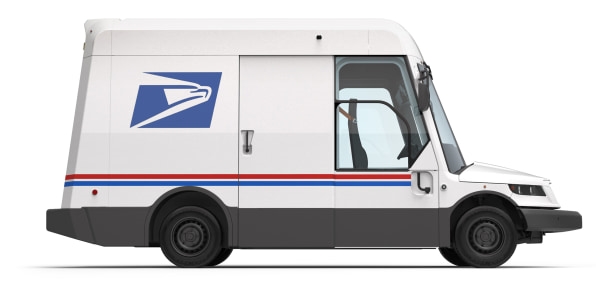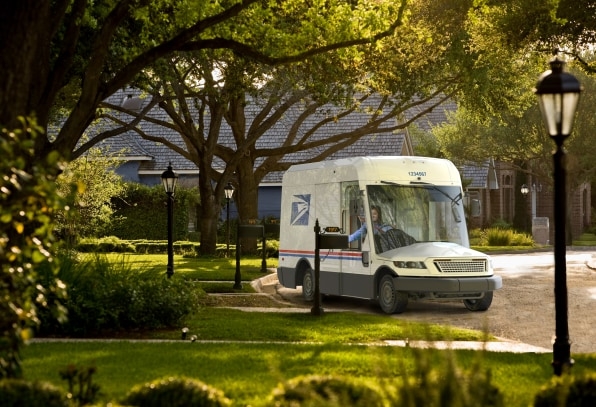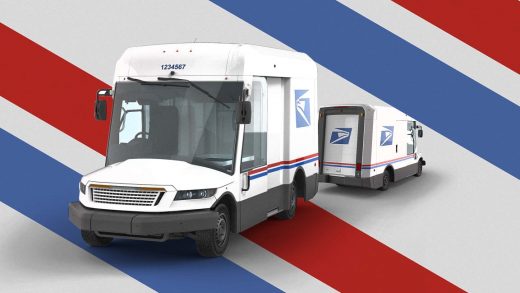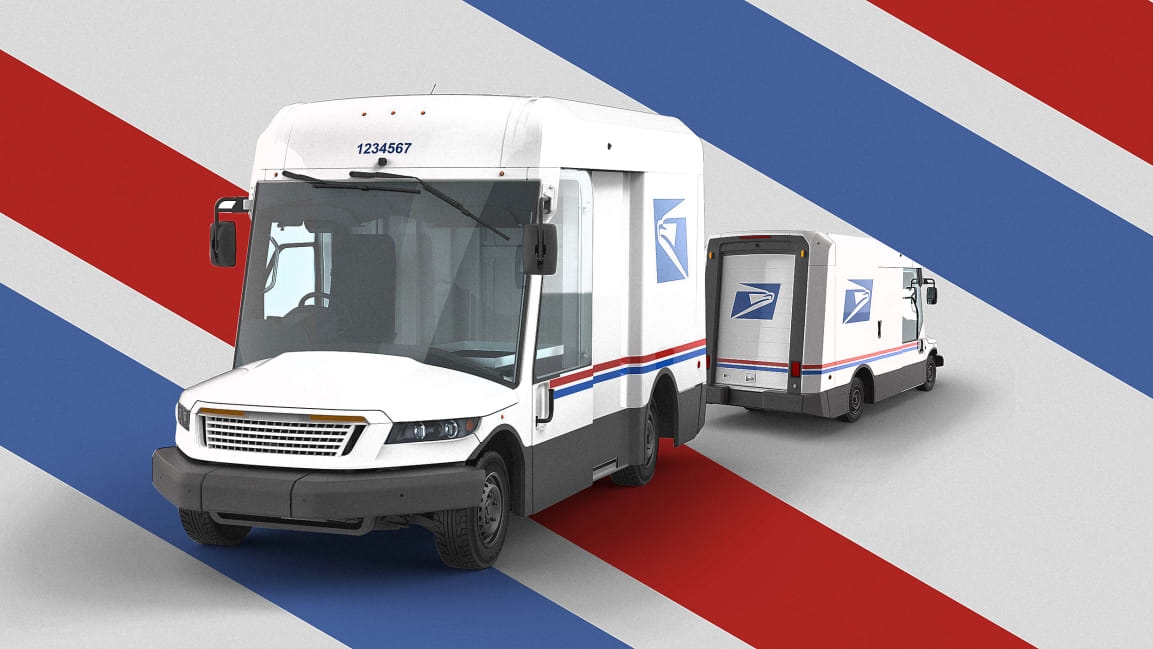Inside the fight over electrifying the postal service’s cute new trucks
When the U.S. Postal Service unveiled the duck-like design for its new mail truck last year, it said that the new design could run on either gas or electricity. But the agency now plans to make only 10% of its initial procurement of up to 165,000 trucks electric—despite President Biden’s goal to electrify the entire federal fleet by 2027, and the fact that it should be possible for USPS to save money by switching to EVs. Now activists are calling on the administration to step in and reverse the decision—and questioning the numbers behind the USPS’s decision making process.
By one analysis from policy analysis company Atlas Public Policy, full electrification could save USPS an estimated $4.3 billion, because 97% of the vehicles the agency uses would have a lower total cost of ownership than the equivalent trucks or vans running on gas. Even though the upfront cost of an EV is higher, it uses less energy in stop-and-go traffic, electricity is cheaper than gas, and electric vehicles have lower maintenance costs than older vehicles. (USPS’s current trucks, which are known for bursting into flames, have especially high maintenance costs, often costing thousands per vehicle per year.)
“The routes are typically less than 100 miles a day, which is very helpful for charging,” says Nick Nigro, founder of Atlas Public Policy. “So you don’t necessarily need the longest range EV battery on the market to satisfy the vast majority of postal delivery fleets, and you can afford a smaller battery pack, which of course costs less. And because you’re traveling less than 100 miles or so a day on the typical route, you don’t need very high power charging at your depot overnight. That’s another cost savings compared to what other more demanding fleets might need.”

In an environmental impact statement, USPS claimed that the opposite was true: EVs were too expensive, it said, and it can only go all-electric if Congress gives it billions more in funding. But USPS hasn’t shared any of the details of its calculations. (Atlas Public Policy had to make estimates based on the industry, not USPS’s contract for the new trucks.) “We don’t know how they got to the numbers they got to, and it just seems entirely counter to what we’re seeing in the private sector and the market trends that are already out there,” says Marc Boom, director of federal affairs at the nonprofit NRDC.
FedEx and Walmart are moving to fully electric fleets by 2040. Amazon, which plans to hit net zero emissions as a company by 2040, plans to have the first 10,000 of 100,000 EVs ordered from Rivian on roads this year. UPS is ordering thousands of new electric delivery vans. The economics already make sense. “I think we’ve reached this inflection point where commercial electric vehicles have the the ability to go to scale,” Mitch Jackson, chief sustainability officer at FedEx, told Fast Company last December. Post Office representatives referred inquiries to a new press release, in which Louis DeJoy, the Postmaster General appointed by an entirely Trump-nominated USPS Board of Governors in May 2020, argued that it was unfair to compare the agency “to private sector multi-national corporations that report yearly profits in the billions of dollars.”
USPS began looking for a replacement for its aging mail trucks in 2015, and the bidding process took years; while it deliberated the initial bids, the cost of electric vehicles on the market steeply declined. Oshkosh, the defense contractor that won the bid, has no experience building electric delivery vehicles. The electric prototype has never been publicly shared, and may not even exist. “No one, to this day, has seen this prototype,” says Connor Morgan, a communications associate at the nonprofit Zero Emissions Transportation Association.
USPS has shared few details, but to outside observers, some of the assumptions it’s making seem flawed. It says, for example, that the vehicle’s 94-kilowatt hour battery can only travel around 70 miles. “That’s the most inefficient electric vehicle I’ve ever seen,” says Nigro. A battery that size should have a range two to three times greater; if the vehicle needs to go that far (and the average USPS route is only 22 miles), the battery should be half the size, making the vehicle far cheaper to produce. USPS has also argued that charging infrastructure would be expensive, without providing details. Nigro notes that any equipment that needs to be installed for charging would be a one-time cost.
While some have argued that USPS trucks will inherently be more expensive than standard electric vehicles because the agency needs a custom design, Nigro says that because it owns hundreds of thousands of vehicles, it can order at a large enough scale that it doesn’t have to be a factor. In some cases, the agency could potentially also use existing electric delivery trucks, since it already uses off-the-shelf gas vans on some routes.

In a letter last week, the EPA said that the USPS’s environmental impact statement is “seriously deficient,” noting that the agency had awarded $482 million to Oshkosh before beginning the environmental review process required by law, and saying that USPS was underestimating greenhouse gas emissions, using outdated data, and since it didn’t share its calculations, it’s impossible for anyone to check the math. In theory, the White House’s Council on Environmental Quality (CEQ), which enforces the National Environmental Policy Act, could officially step in, though “that authority has rarely been used,” says Boom—and the EPA also chose not to recommend the CEQ take action, instead making its concerns clear in its letter in the hopes that officials there would rethink the decision. Biden has also nominated new members to Postal Service’s Board of Governors, they could also ask DeJoy to change course. Some members of Congress are also trying to pressure USPS to change its plans. In its press release, USPS said that it “remains committed to working with all its stakeholders— including Congress and the Environmental Protection Agency,” but then defended its current plans.
For now, USPS expects to spend billions on new gas trucks that are only 0.4 miles per gallon more efficient than the older trucks made in the 1980s. “The cost of not electrifying is really high,” says Morgan. “That comes in the form of hundreds of thousands of metric tons of additional CO2 equivalent emissions in the coming years. It also means what we think to be at least $200 million per year, if not far more, in environmental and public health damages associated with carbon pollution, and PM2.5, and NOx emissions, which don’t come from electric vehicles. In the long term, this is going to cost billions of dollars, both on the total cost of ownership side of things, and the societal side of things.”
Correction: This article has been updated to reflect the Louis DeJoy was not nominated by President Trump but was appointed by the USPS Board of Governors.
Fast Company , Read Full Story
(27)



